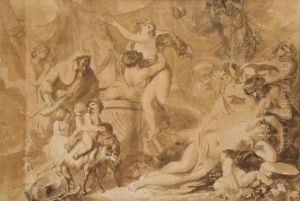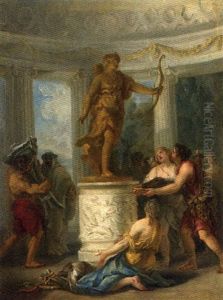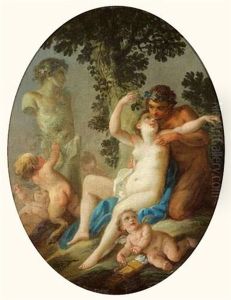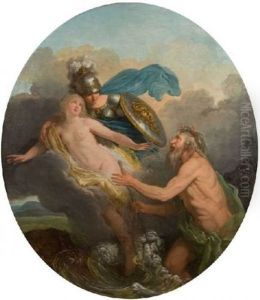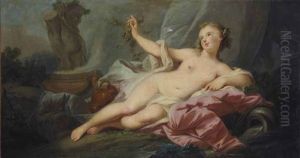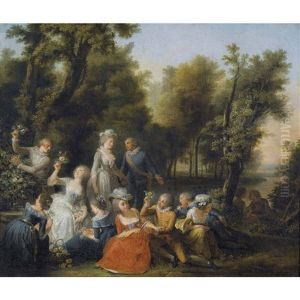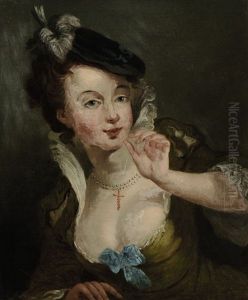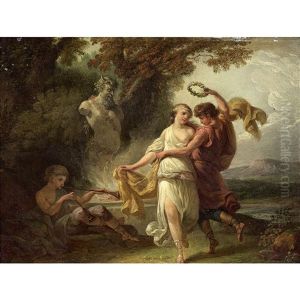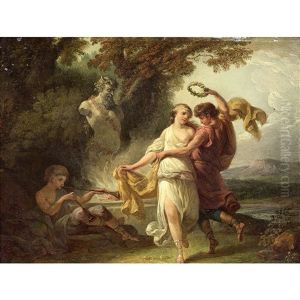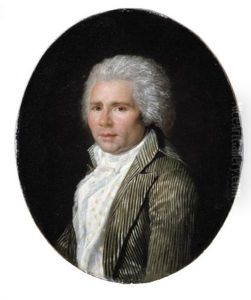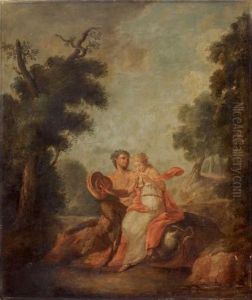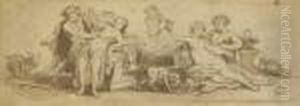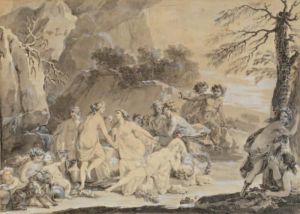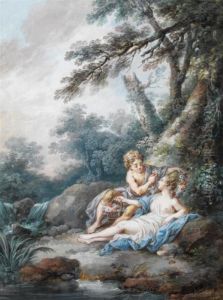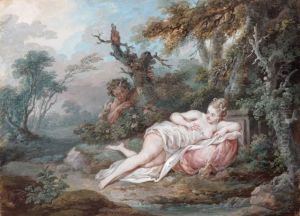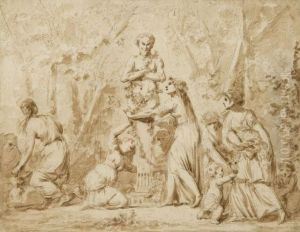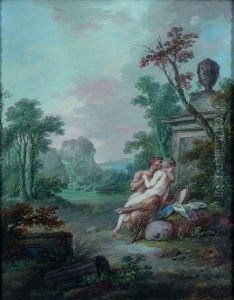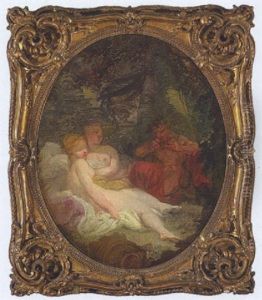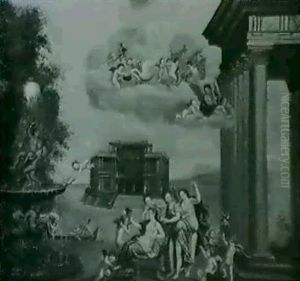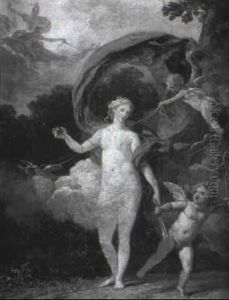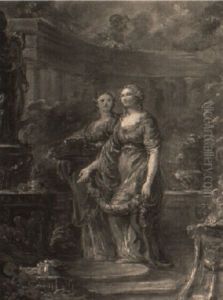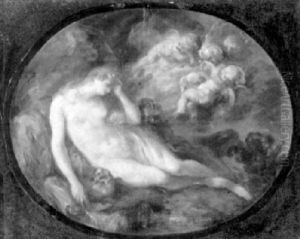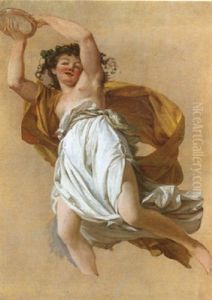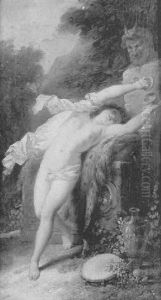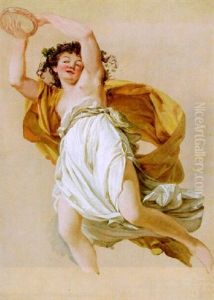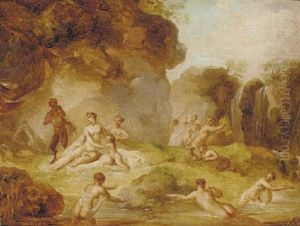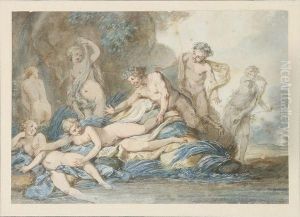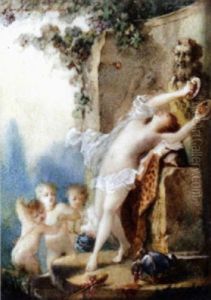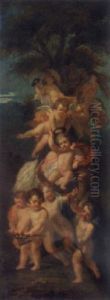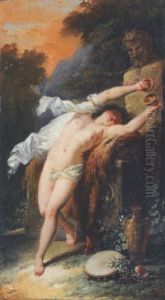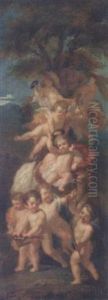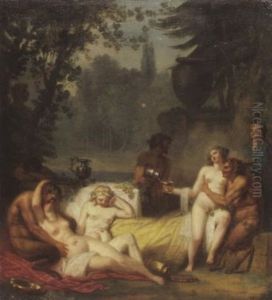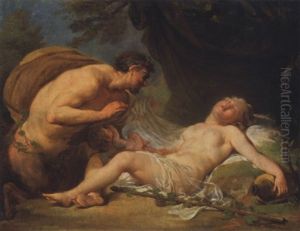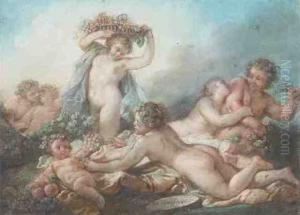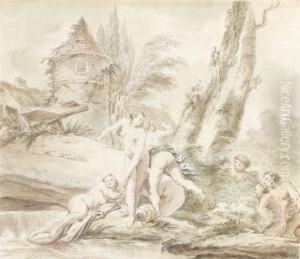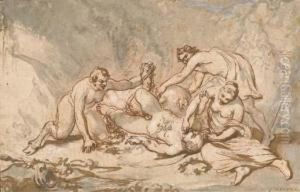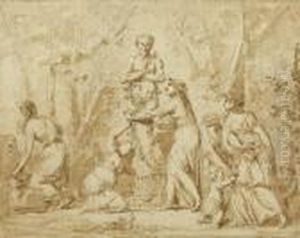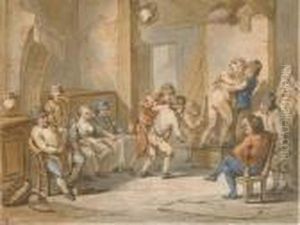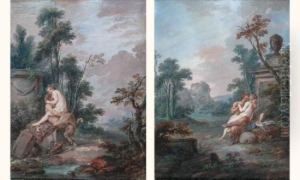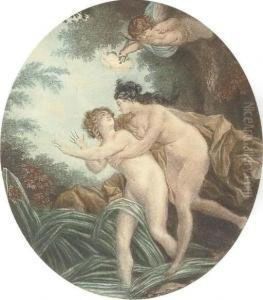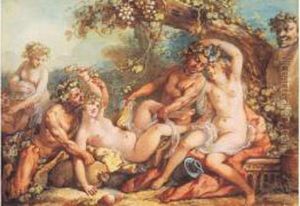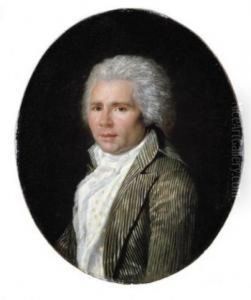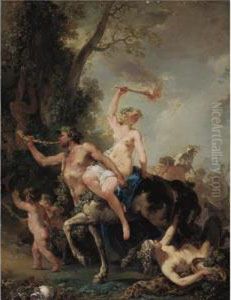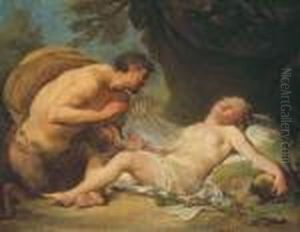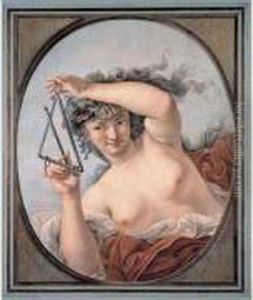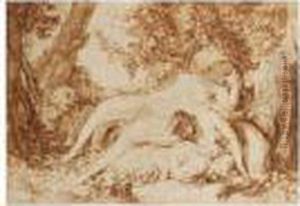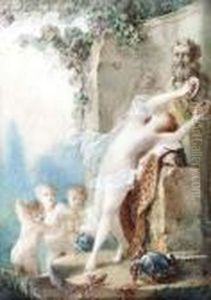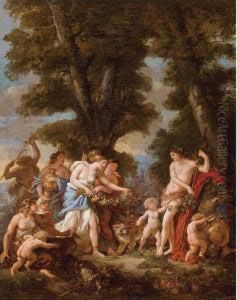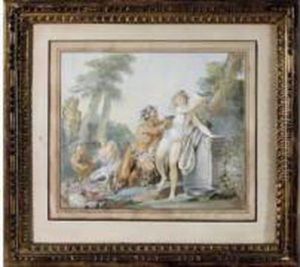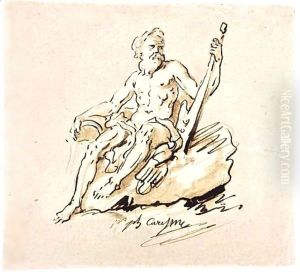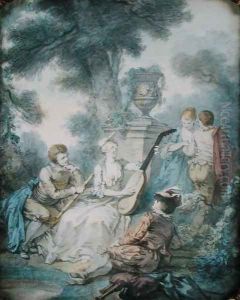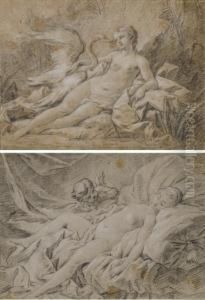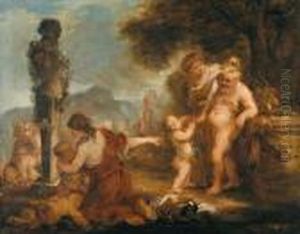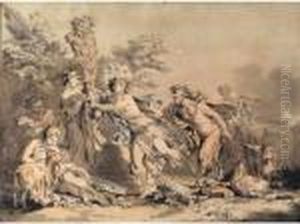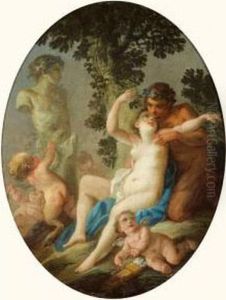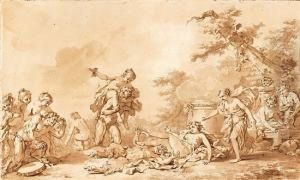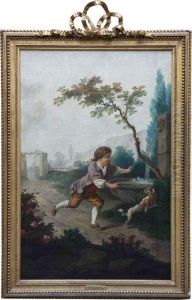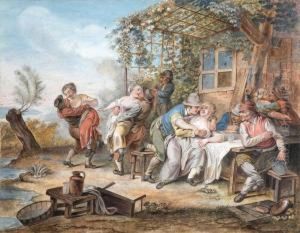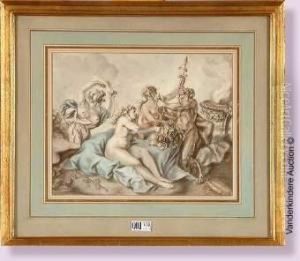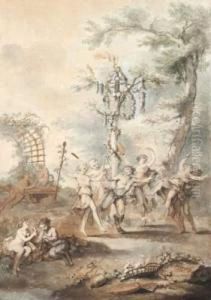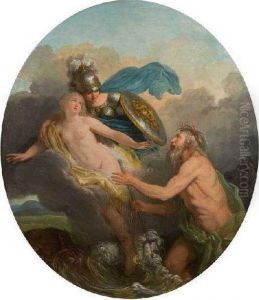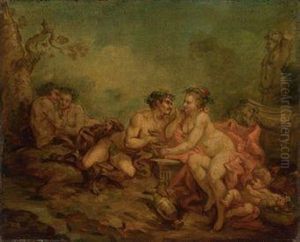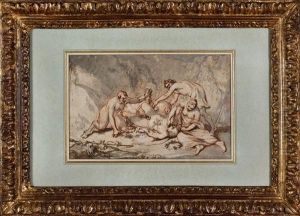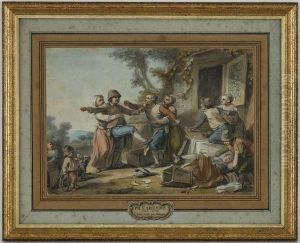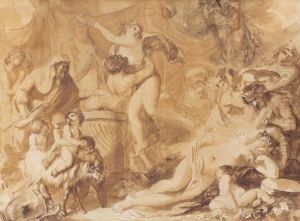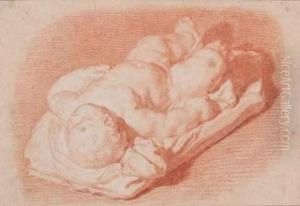Jacques Philippe Caresme Paintings
Jacques Philippe Caresme was a French painter and engraver born in Paris in 1734. He was known for his portraits, historical scenes, and engravings. During his lifetime, he gained a reputation for his skill in both painting and printmaking.
Caresme initially received his artistic training from his father, who was also an artist, before continuing his education at the Royal Academy of Painting and Sculpture in Paris. He honed his abilities under the guidance of notable artists of the time. His talents were recognized early on when he won the prestigious Prix de Rome for painting in 1759, which allowed him to study at the French Academy in Rome from 1760 to 1763. This period was crucial for his artistic development as he was exposed to the works of the Italian masters, which would greatly influence his future works.
Upon returning to France, Caresme quickly established himself as a respected artist in the Parisian art scene. He became a member of the Royal Academy in 1771 and exhibited his works at the Salon, the official art exhibition of the Académie des Beaux-Arts in Paris. His paintings often depicted scenes from classical mythology, the Bible, and contemporary history, reflecting the neoclassical tastes of the time.
Caresme was also a skilled engraver, and he produced a number of engravings that were based on his own designs as well as the works of other artists. His engravings were celebrated for their precision and clarity, contributing to his reputation as a master printmaker.
Despite his success, Jacques Philippe Caresme's life was marked by financial difficulties, which were common among artists of his era. He struggled to maintain financial stability, and this struggle affected his ability to produce new works later in his life. Caresme continued to work until his death in 1796, leaving behind a body of work that was appreciated for its elegance and adherence to the neoclassical style.
Caresme's legacy is recognized in the history of French art, particularly for his contributions to the neoclassical movement and for his skill in both painting and engraving. His works are held in various museum collections and continue to be studied for their artistic merit and historical significance.
